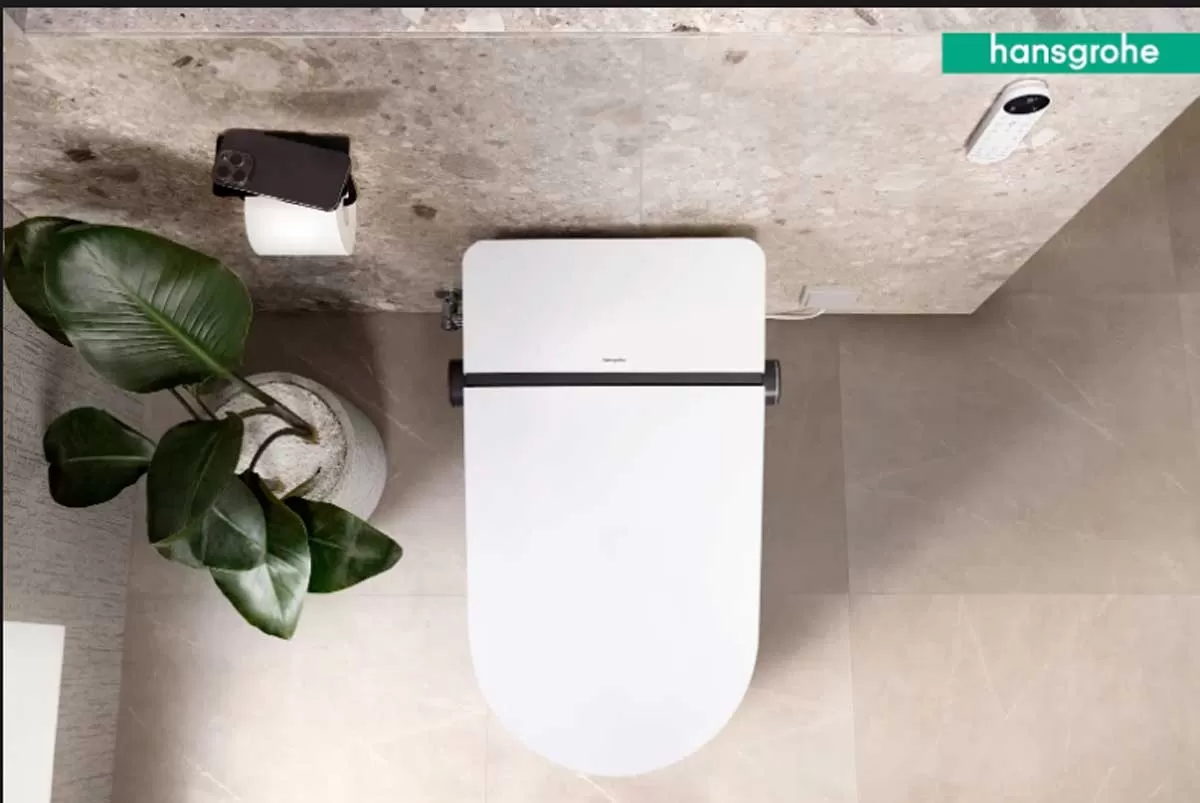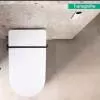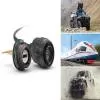The use of construction chemicals during construction not only prevents corrosion but saves high costs on treatment later, explains ARUNENDU TA.
Corrosion - the gradual degradation of materials, especially metal, through chemical reaction with the environment - can be the bane of construction. It means that the physical properties of metals used in construction weaken and start corroding, often known as rusting. Most developers take measures to prevent corrosion during construction. However, corrosion can also be removed from a built structure. It is commonly seen in buildings and structures exposed to inclement environments such as onshore marine atmospheres.
Concrete is a composite material made from cement (usually Portland cement and fly-ash), fine aggregate (sand), coarse aggregate (gravel or crushed stone), chemical admixtures and water. During the mixing of these ingredients, cement reacts with water and forms hydrates around the aggregate to form a solid, bonded conglomerate. While concrete is a relatively inert and durable building product, there are ways in which it can deteriorate. While the concrete material itself may not degrade, the steel reinforcement or rebars embedded inside concrete can develop rust. When steel corrodes, it expands and damages the concrete, often resulting in delamination and spalls.
The extensive use of construction chemicals during construction not only prevents corrosion but saves high costs on treatment of corrosion at a later stage.
Forms of corrosion
There are many forms of corrosion including sulphate attack and alkali silica reaction (ASR). Deterioration of concrete material can be prevented by selecting the right ingredients and designing an excellent dense concrete mix that protects the concrete from aggressive environments.
The use of epoxy-coated galvanised steel reinforcement is one of the most reliable means of avoiding corrosion during any construction. It is always better to cover the reinforcements inside concrete elements with construction chemicals so that there are fewer possibilities of migration of oxygen from moisture, which leads to corrosion. In the past few decades, extensive research in corrosion of reinforced concrete has led to several key findings. For instance, corrosion inhibitors are one of the most efficient chemicals for reinforcement of concrete. Corrosion-inhibiting admixtures halt the progress of corrosion of reinforced concrete.
As noted above, corrosion is a process of chemical reaction in which metal converts to their stable oxides. This is called electrochemical oxidation, where oxygen acts as an oxidant. The formation of iron oxide, commonly known as ´rusting´, is an example of electrochemical corrosion. Generally, oxides or salts of original metals form in corrosion. When corrosion impacts ceramics and polymers, the latter loses properties like appearance, strength and permeability.
Typically, corrosion affects structural elements because of their exposure to air and vapours.
In an electrochemical reaction, the iron goes into solution as ferrous ions at anodic sites on the surface, leading to an anodic reaction. The iron atoms release electrons whose negative charge quickly build up in the metal and prevent further anodic reaction, or corrosion. This dissolution will continue only if the electrons released can pass to a site on the metal surface where a cathodic reaction is possible. At a cathodic site, the electrons react with some reducible component of the electrolyte and are themselves removed from the metal. The ´corrosion current´ flow of electrons continues to degrade the original metal in this process. The corroding piece of metal behaves as a ´mixed electrode´ as simultaneous anodic and cathodic reactions are proceeding on its surface.
The most common and important electrochemical reactions in the corrosion of iron are:
Anodic reaction (corrosion):
Fe ? Fe2+ + 2e ---------------- (i)
Cathodic reactions (simplified):
2H+ + 2e ? H2 or
H2O + + O2 + 2e ? 2OH- -------- (ii)
Reaction (i) is most common in acids and in the pH range 6.5-8.5 the most important reaction is oxygen reduction;
(ii) In this latter case, corrosion is usually accompanied by the formation of solid corrosion deposits from the reaction between the anodic and cathodic products.
Fe2+ + 2OH- = Fe(OH)2
-------------------- Iron (II) Hydroxide
Pure iron (II) hydroxide is white but the material initially produced by corrosion is normally greenish in colour owing to partial oxidation in air.
2Fe(OH)2 + H2O + + O2 ? 2Fe(OH)3 ---------------- hydrated iron (III) oxide
Owing to further hydration and oxidation reactions, the reddish rust that eventually forms is a complex mixture whose exact constitution will depend on other trace elements present. As the rust is precipitated owing to secondary reactions, it is porous and absorbent and tends to act as a harmful substrate, which encourages further corrosion.
Different types of anodic and cathodic reactions may occur for other metals or different environments.
If solid corrosion products are produced directly on the surface as the first result of anodic oxidation, these may provide a highly protective surface film, which retards further corrosion. The surface is then said to be ´passive´. An example of such a process would be the production of an oxide film on iron in water, a reaction which is encouraged by oxidising conditions or elevated temperatures.
2Fe + 3H2O ? Fe2O3 + 6H+ + 6e
Inorganic corrosion inhibitor
Adding corrosion inhibitors to the concrete mix offers viable protection against corrosion. Generally, there are three groups of inhibitors: Anodic, cathodic and mixed inhibitors.
- Anodic inhibitors reduce the corrosion rate by reacting with corrosion products and forming a protective film.
- Cathodic inhibitors reduce the corrosion rate by reacting with the cathode sites (as an oxygen-barrier) on the steel. Passivating inhibitors like nitrites represent special types of anodic inhibitors and are effective if present in sufficient concentrations.
- Mixed inhibitors influence both the anodic and cathodic reaction sites by forming an adsorption film on the metal surface. These adsorption-type inhibitors are typically organic compounds. In recent years, results of many investigations on organic migrating corrosion inhibitor (MCI), which is primarily composed of an amino carboxylate or amino alcohol, shows encouraging results.
Organic corrosion inhibitor
Organic corrosion inhibitors (CHRYSO® Corrocrete) generally act through a bipolar mechanism. The functional group responsible for this organic compound adsorption on metal surfaces through the lone pair of the atom, while iron ions on metal surface act as acid by accepting electrons from a donor group. By this, organic corrosion inhibitors form a strong corrosion-protecting passive film on the steel surface. The adsorption of these compounds on anodic sites decreases anodic dissolution of stainless steel by the electron-rich heteroatom in the organic compound, which adsorbs on the anodic site through the lone pairs of electrons of an atom, thus reducing the anodic dissolution of metal.
In an acidic solution, these compounds can exist as protonated species, which may adsorb on the cathodic sites of the stainless steel and decrease the evolution of hydrogen.
In a research, it was found that organic corrosion inhibitors effectively delayed the onset of steel corrosion and inhibited steel corrosion even when the passive film was compromised. The strong absorption of organic corrosion inhibitors onto the steel surface inhibited the cathodic reaction of steel corrosion by limiting the access of oxygen to the steel.
It is necessary to check the concrete properties with and without corrosion inhibitors in fresh (workability, retention, setting time, pH of medium, etc) as well as hardened state (compressive strength).
Exhaustive studies by researchers have also found that bipolar corrosion inhibitors are effective to protect or delay corrosion of reinforcements in concrete, if used properly during production of concrete. The only concern is the optimum dosage of corrosion inhibitors, which needs to be determined before their use for effective results.
Once concrete cracks, we need to think of various solutions to rectify and retrofit structures to protect the structure against corrosion. In this category, different anti-corrosive coating systems, grouts, etc, exist for application depending on the nature of criticality, location and substrate.
In conclusion
Our aim should be to produce impermeable concrete to the maximum extent possible to block pores inside the concrete matrix, and restrict entry of water and migration of various harmful ions. We can thus eliminate maximum risk of corrosion by utilising good ingredients like aggregates and supplementary cementitious material along with corrosion inhibitors (a must for aggressive environments) during production of concrete.
We also need to give sufficient attention to curing (either with water or with a good curing compound like CHRYSO®Cure AC) in the early stage (we often forget and start only after cracking), which limits corrosion at a later stage.
Needless to say, the use of galvanised or anti-corrosive coated reinforcement bars is a must to protect concrete against corrosion.
About the author:
Arunendu Ta, Head of Research & Development and Product Development, CHRYSO India, has been a part of the CHRYSO India family since the last 18 years. He has worked on some critical and important projects such as Tarapur Atomic Power Project of L&T and Afcons, and has formulated products for various atomic power projects. He is associated with launching a naphthalene-based product for M-75 grade of concrete for the first time in India.
Share your views at feedback@constructionworld.in


















